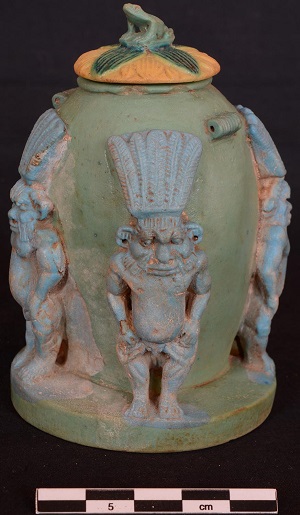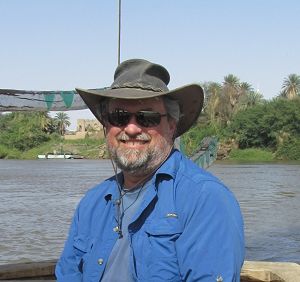“Backwater Puritans?" Racism, Egyptological Stereotypes and the Intersection of Local and International at Kushite Tombos
March 20, 2021 1PM ET/ 7PM EET
Lecture 4 of the Africa Interconnected Series
(Registration form located below)
Speaker: Professor Stuart Tyson Smith
Info about the lecture:
Egyptological and more popular perceptions of Nubia and the Kushite Dynasty (c. 747- 654 BCE) have framed Kush as a periphery to civilized Egypt, unsophisticated interlopers in Egypt and the broader Mediterranean world during the first millennium. Depictions of Nubians from earlier periods of Egyptian history, like Tutankhamen’s painted box, reinforced these ideas of Nubian inferiority compared to Egypt and the Near East. But to what extent was Nubia a “backwater” to Egypt? For the Persians, depictions of Nubians and other foreigners presenting gifts at Persepolis represent the diversity of the empire paying homage to the Persian king as an all-lord. Archaeological evidence supports the more cosmopolitan Persian view of Kush against older racist Egyptological stereotypes of “barbaric” Nubians. It is clear from recent archaeological work at Tombos and elsewhere that Nubia was not an unsophisticated backwater. Objects with Egyptianizing motifs asserted a cosmopolitan social status that connected their owners to an international elite culture that spanned Nubia, Egypt, and extended across the Mediterranean during the Iron Age. The Kushite civilization that flourished for a thousand years was not an imperfect imitation of ancient Egypt, as some Egyptologists have asserted. Instead, features taken from Egypt and the Mediterranean world were adapted and thoroughly integrated with local practices and belief systems.
About Stuart Tyson Smith:
Tyson Smith is Professor of Anthropology and Director of the Institute for Social, Behavioral, and Economic Research at the University of California, Santa Barbara. Smith’s research centers on the civilizations of ancient Egypt and Nubia. He has published on the dynamics of Egyptian imperialism and royal ideology, the use of sealings in administration, death and burial in ancient Egypt and Nubia, and the ethnic, social, and economic dynamics of intercultural interaction between ancient Egypt and Nubia. He has also participated in and led archeological expeditions to Egypt and since 1997 to Sudanese Nubia, where he co-directs the UCSB-Purdue University Tombos expedition to the third cataract of the Nile. This research has been funded by multiple grants from the National Geographic Society and the National Science Foundation. In addition to fieldwork, he is also engaged in a long term study and write up of the UCLA excavations conducted by the late Alexander Badawy at the fortress of Askut in Sudanese Nubia. In addition to numerous articles and book chapters, Dr. Smith has published three books, Askut in Nubia: The Economics and Ideology of Egyptian Imperialism in the Second Millennium BC, Valley of the Kings, and Wretched Kush: Ethnic Identities and Boundaries in Egypt’s Nubian Empire. In 1993, he took a break from academia as Egyptological Consultant for the hit MGM movie “Stargate”, commenting on the script and recreating spoken ancient Egyptian for the film. He returned to Hollywood consulting in 1998 and 2000 for the Universal remake of “The Mummy” and its sequel, “The Mummy Returns”, and most recently for 2018’s web production “Stargate Origins: Catherine.” Professor Smith holds a Ph.D. in Archaeology from the University of California, Los Angeles.
Registration will close 24 hours before the lecture starts. Registration does not include any future lectures in this series.


